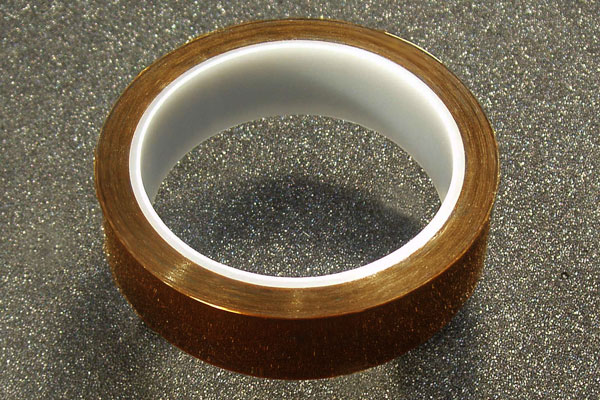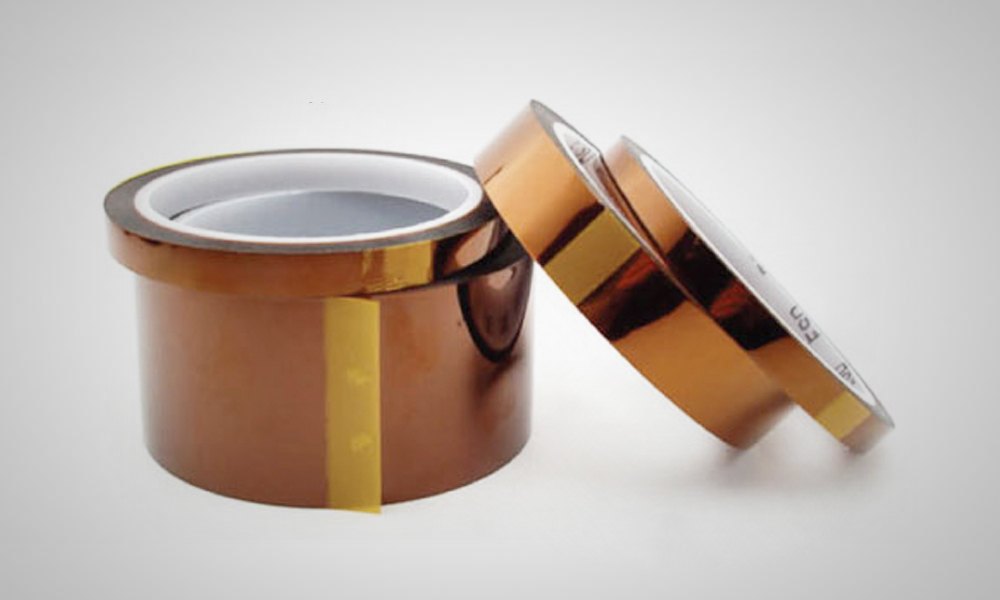The Amber Enigma
For Kapton tape, there exists a peculiar sort of magic—an alchemical transformation of humble materials into something possessing almost supernatural properties, a thin film of amber-hued polymide that withstands extremes that would destroy lesser substances. This unassuming roll of golden adhesive, tucked away in toolboxes and laboratory drawers around the world, performs daily miracles so quietly we have ceased to marvel at them. It has travelled to the moon and back, wrapped itself around the electronic hearts of satellites, insulated the innards of smartphones, and protected delicate circuits during the violent heat of soldering—all while maintaining a modest anonymity, unlike its more celebrated cousin, the silver duct tape of popular culture. It is the silent hero of the technological age, the thin amber line between functionality and failure.
The Chemistry of Resilience
The molecular architecture of this remarkable material reveals itself in a structure of almost poetic elegance:
Polymide Foundation:
A backbone of repeating imide units creating chains of extraordinary thermal stability
Adhesive Interface:
Typically silicone-based, maintaining its grip across temperature extremes from -269°C to 400°C
Dimensional Stability:
A structure that resists stretching, shrinking, or deformation even under extreme stress
Electrical Insulation:
Dielectric properties that faithfully contain electrons within their intended pathways
This chemical composition, this precisely engineered arrangement of molecules, creates a material that seems to defy the very laws of thermodynamics—remaining unfazed by conditions that would render most substances molten, brittle, or transformed entirely.
The Genealogy of Gold
The amber tape’s lineage traces back through a history of scientific perseverance:
The Polymide Genesis
Developed initially for aerospace applications in the 1960s, this material emerged from laboratories seeking to push the boundaries of what synthetic chemistry could achieve. The molecular structure, once perfected, proved so remarkably useful that its applications multiplied exponentially—from the vacuum of space to the miniaturised world of microelectronics.
The Evolution of Applications
From its aerospace origins, the amber adhesive infiltrated countless industries:
· Electronics Manufacturing:
Masking circuit boards during wave soldering processes
· Thermal Management:
Insulating components that generate extreme heat
· 3D Printing:
Creating non-stick build surfaces for molten filaments
· Aerospace:
Insulating satellites against the thermal extremes of orbit
“Singapore’s electronics manufacturing sector consumes approximately 2.7 million metres of high-temperature polymide tape annually, with precision applications in semiconductor production accounting for 63% of total usage. Our humidity and heat present unique challenges for adhesive stability that have driven innovations in formulation.” — Singapore Electronics Manufacturing Association

This island nation, with its concentration of high-tech manufacturing, has become an unexpected crucible for testing the limits of this golden material in tropical conditions—where heat and humidity combine to challenge even the most resilient of adhesives.
The Paradoxical Properties
The amber tape embodies a series of contradictions that border on the metaphysical:
The Flexibility-Strength Conundrum
How can something be simultaneously flexible enough to conform to intricate surfaces yet strong enough to withstand mechanical stress? The molecular arrangement achieves this paradox through long polymer chains that can bend without breaking, distributing stress throughout the structure rather than concentrating it at failure points.
The Heat-Resistant Adhesive
The seemingly impossible challenge of creating an adhesive that maintains its grip at temperatures that would incinerate organic materials has been solved through silicone chemistry—creating bonds that strengthen rather than weaken under thermal stress.
The Practical Applications
Beyond its industrial applications lies a world of practical uses both professional and improvised:
· Electronics Repair:
Insulating exposed wires and circuit traces
· 3D Printing:
Creating build surfaces that release completed prints with ease
· Powder Coating:
Masking areas that should remain uncoated
· Artistic Goldwork:
Creating clean lines for gold leaf application
· Battery Insulation:
Protecting and separating delicate lithium-ion cells
“In Singapore’s maker community, we’ve documented over 127 creative applications for high-temperature polymide tapes beyond their intended industrial use—from creating custom flexible circuits to waterproofing sensitive drone components in our tropical conditions. The material’s heat resistance and dimensional stability make it irreplaceable in our innovation ecosystem.” — Singapore Makers Collective
The Technical Considerations
Not all amber tapes are created equal, and selection requires consideration of numerous factors:
The Thickness Spectrum
Available in variations from whisper-thin 1-mil (0.025mm) to substantial 6-mil (0.15mm) thicknesses, each serving different applications where flexibility or durability take precedence.
The Width Variations
From needle-thin 1mm strips for the most precise electronic applications to broad 50mm ribbons for larger surface masking.
The Adhesive Formulations
Silicone-based adhesives for the highest temperature applications, versus acrylic variants that offer stronger adhesion in less extreme conditions.
The Future Innovations
The horizon promises fascinating developments in this field:
Conductive Variants
Polymide tapes with embedded conductive particles or patterns, creating flexible circuit pathways.
Active Thermal Management
Integrated phase-change materials that absorb and release heat to actively regulate temperature around sensitive components.
Electrostatic Discharge Protection
Formulations that safely channel away potentially damaging static electricity from sensitive electronics.
The Silent Enabler
This unassuming amber film, this thin layer of engineered resilience, represents more than mere utility—it embodies a fundamental enabling technology without which much of our modern world would be impossible. Without its ability to withstand extremes, to insulate precisely, to conform perfectly, and to release cleanly, countless electronic devices would fail, space missions would falter, and manufacturing processes would require radical redesign.
As we carry our miniaturised technological marvels in our pockets, as we communicate through satellites orbiting silently above, as we push the boundaries of what electronics can achieve, we rarely consider the humble materials that make these wonders possible. Yet there it is—thin, golden, unassuming—playing its crucial role in the background of innovation, asking for no recognition while performing its daily miracles of protection and insulation. The technological future continues to unfold, enabled in countless unseen ways by the remarkable properties of Kapton tape.


